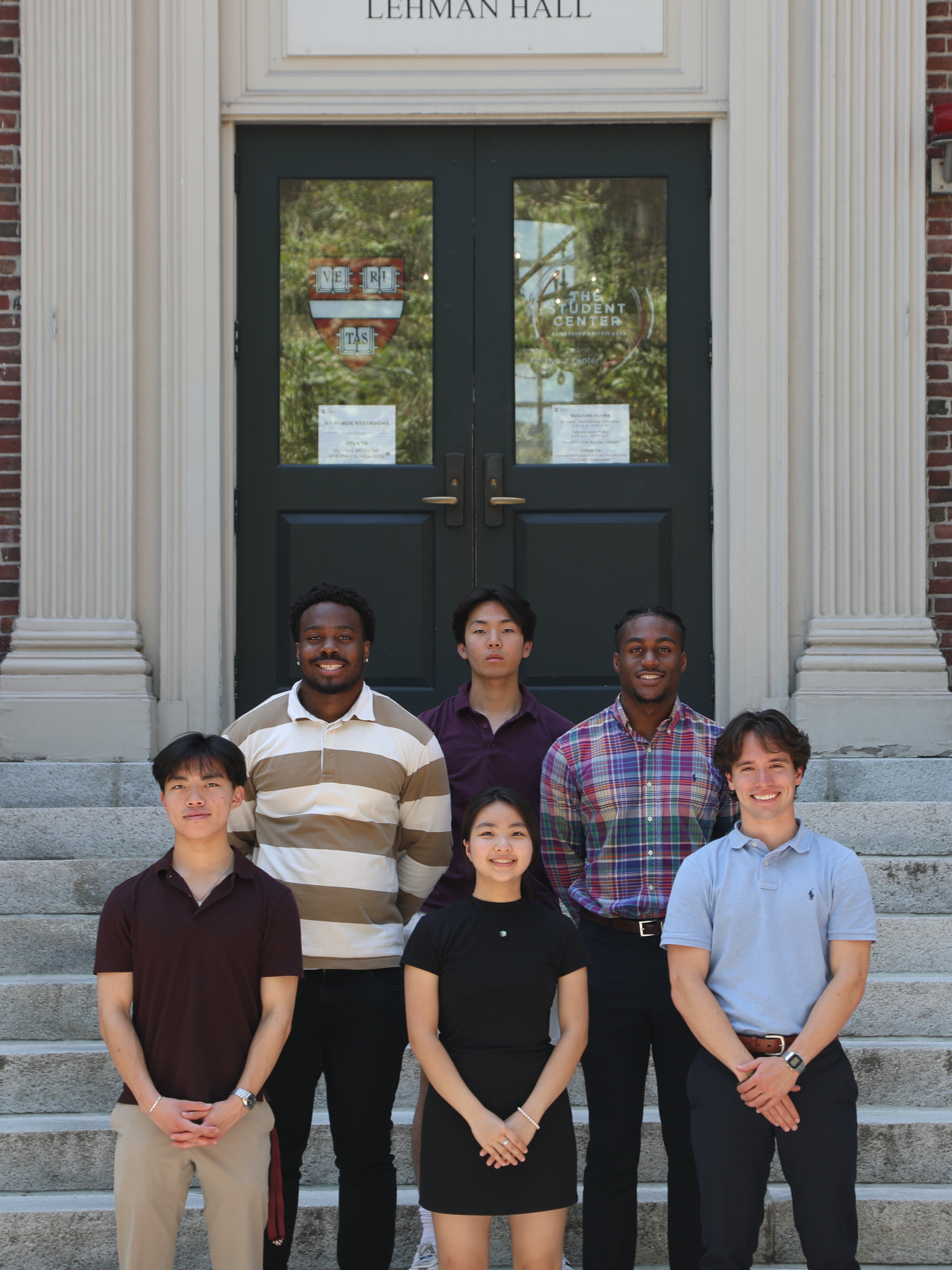By Alicia Lara
Abstract
Over the past 50 years North America has lost nearly 2.9 billion birds—a crisis caused by habitat loss, climate change and human development. But an often overlooked consequence of this decline is the loss of genetic diversity. This paper explores the feedback loop between declining bird populations and reduced genetic variation, how inbreeding, genetic bottlenecks and loss of adaptive traits make species more vulnerable to extinction. As genetic resilience declines so does a population’s ability to adapt to environmental stressors and we get a decline feedback loop.
Using studies of the Mangrove Finch, California Condor and North American waterfowl the paper looks at the ecological and evolutionary impacts of genetic homogeneity including overspecialization, founder effects and ecosystem disruption. Then it looks at strategies to break this cycle including habitat conservation, intentional breeding, wildlife corridors and new tools like CRISPR. Together these tools offer a path to restore genetic health and preserve both bird populations and the ecosystems they inhabit. Protecting avian genetic diversity is not just important for species survival but for overall biodiversity and ecological stability in a changing world.
Introduction
In Northern America alone the bird population has declined by 2.9 billion in the last 55 years. Birds are a significant part of the global ecosystem, serving as seed dispersers, pest control, pollinators, and are an integral part of the food web. Without birds insect populations would boom, crops would fail, and the Earth would lose much of its rich biodiversity. The continuation of declining populations will eventually lead to genetic bottlenecks, reduced adaptability, and increased endangerment risks. This paper argues that genetic diversity loss is both a result of and contributes to bird population decline in a vicious cycle, and that targeted conservation efforts are crucial for disrupting this feedback loop.
Background & Literature Review
A wide array of literature is available on the causes and consequences of bird population decline in North America. While habitat loss, climate change, and human activities are widely recognized, less attention has been given to the genetic angle of this crisis. This gap in the literature is worth mentioning, as genetic diversity plays a critical role in species survival and adaptability.
Frankham, R. (2005). Genetics and extinction
Frankham’s review explores the link between genetic factors and species extinction, arguing that loss of genetic diversity significantly increases a population’s vulnerability to environmental change, disease, and reproductive failure. The paper introduces concepts like inbreeding depression and genetic drift as forces that push declining populations into an “extinction vortex.” This source is foundational to the paper’s argument that genetic erosion is not just a consequence of endangerment but a driving force in population decline.
Fisheries, N. (n.d.). The portfolio effect: where diversity matters in marine fisheries
This article introduces the “portfolio effect,” a concept used to explain how genetic diversity stabilizes populations by spreading risk. In marine species, genetic variety acts like a buffer against ecosystem disturbances. Although focused on fisheries, the concept applies directly to avian populations, strengthening the paper’s claim that diverse gene pools offer resilience against disease, habitat change, and climate stress.
“Low Genetic Variation - Understanding Evolution” (2021)
This educational resource from Berkeley explains how low genetic variation weakens a species’ ability to evolve in response to environmental threats. It emphasizes that without existing resistant genes, a population cannot adapt to new diseases or changes in its habitat. This supports the discussion on the role of genetic diversity in evolutionary survival and reinforces the need for conservation approaches that consider more than just population numbers.
Colles, A., Liow, L. H., & Prinzing, A. (2009). Are specialists at risk under environmental change?
Colles et al. argue that species with narrow ecological niches—specialists—are more vulnerable to environmental changes than generalists. Using evolutionary and ecological data, they show that specialization reduces a species’ ability to adapt. This is directly relevant to the case study of the Mangrove Finch, and supports the argument that genetic homogeneity often leads to overspecialization, which further increases extinction risk.
Landbird Conservation - Charles Darwin Foundation (n.d.)
This page details conservation efforts for landbirds in the Galápagos, including the critically endangered Mangrove Finch. It provides insight into how habitat loss and limited genetic diversity have made the species highly vulnerable. This source is central to the Mangrove Finch study, offering real-world context for the ecological and genetic challenges facing isolated bird populations.
Founder Effect – Genome.gov (n.d.)
Genome.gov’s explanation of the founder effect describes how a small, isolated population carries only a fraction of its species’ genetic diversity, which can lead to long-term genetic limitations. This phenomenon is key to understanding how habitat fragmentation and population isolation—often caused by urbanization—can permanently reduce the evolutionary potential of bird populations.
Panda, S. K., & McGrew, M. J. (2021). Genome editing of avian species
This study explores the potential and ethical considerations of using gene editing tools like CRISPR in birds. It provides examples of successful disease resistance engineering in poultry, suggesting future applications in conservation. This source strengthens the argument that technology, alongside traditional conservation methods, could be a powerful tool in preserving avian genetic diversity and reversing population decline.
The Genetic Diversity Cycle
Genetic diversity is the variation in genetic code between individual members of a species. High genetic diversity is desirable as it is a marker of species health due to the portfolio effect. The portfolio effect is a scientific concept that emphasizes the importance of genetic diversity as a form of insurance in unstable conditions (Fisheries, n.d.). One source states "if a population is exposed to a new disease, selection will act on genes for resistance to the disease if they exist in the population. But if they do not exist — if the right genetic variation is not present — the population will not evolve and could be wiped out by the disease" (“Low Genetic Variation - Understanding Evolution”). The more genetically diverse a species is, the more likely it will have members that survive new threats and changes in environment. A genetically diverse species will be more resilient and able to adapt to events like climate change and habitat loss, both problems that the modern bird population faces.
However, genetic diversity is strongly associated with population size. As avian populations decline - due to habitat loss, urbanization, and climate - so does the genetic pool, creating a bottleneck. Harmful genes such as the ones that may cause health issues, are usually recessive. That means both parents must pass down the gene in order for the trait to manifest in the offspring. When populations are small and not genetically diverse, it is much more likely that two mates will share the gene. This is called inbreeding depression, and it causes the species to be less fit to survive with each generation. Even if populations recover, sometimes it is impossible to retrieve the genetic diversity lost.
This cycle is what is known as the extinction vortex. A decrease in population results in lost diversity, hindering survival and furthering the population decline. It becomes very difficult for a species to escape this loop without intervention. That is why it is crucial that conservation efforts are not only focused on numbers, but also genetic diversity and the long-term survival of the species.
Evolutionary & Ecological Consequences
In some cases, genetically homogenous populations respond to changes in their environments with overspecialization. While specialization can be effective, it develops a species that can only live under the narrow conditions it adapted to, these conditions including diet, climate, and many other factors. When these conditions are changed, overspecialized species are less likely to survive than their opposite, generalized species (Colles et al., 2009). This is particularly relevant among endangered avian species such as the Mangrove Finch.or example, the Mangrove Finch is specialized to live on the Galapagos Islands, feeding off insects from specific trees and living exclusively on coastal mangroves (Landbird Conservation - Charles Darwin Foundation, n.d.). The species is now critically endangered because they are losing habitat and are not diverse enough to live anywhere else.
Another consequence of genetic isolation is the founder's effect, in which a small group branches away from the rest of their species and creates a new population. The next generation is then limited to the genetic variation of the smaller founding group (Founder Effect, n.d.). The more human activities like urbanization force species to split, the more isolated and genetically uniform groups are created.
Beyond this, birds are key players in pollination, seed dispersal, and insect control. When their populations drop or become genetically weakened, these ecosystem services are disrupted. Genetic uniformity not only harms the species but it is also harmful ecologically.
Breaking the Cycle: Solutions & Interventions
Major declines in bird population are caused primarily by human activity and should be addressed with scientific intervention and conservation efforts. Some promising strategies include protecting existing bird habitats, intentional breeding of endangered species, the implementation of wildlife corridors, and the employment of DNA editing tool CRISPR.
The habitat protection method encourages wildlife communities to naturally rebuild their gene pools. This worked in the case of waterfowl, who once protected by initiatives like the North American Wetlands Conservation Act, were able to grow in population by 56% in the last 50 years.
The population and diversity of the California Condor benefited greatly from the U.S Fish and Wildlife Service, which collaborated with zoos and reintroduction programs to effectively breed the 27 individuals once in captivity up to a much healthier number of more than 300 condors. This is a good example in which intentional breeding and consistent observation can make a big difference in the health of a species.
Wildlife corridors also have the potential to mitigate the population and genetic crises. A wildlife corridor is a section of land connecting habitats that would otherwise be isolated from each other. Corridors like these prevent the previously mentioned phenomenon like inbreeding and overspecialization by allowing typically disconnected groups of individuals to mingle and merge gene pools.
Finally, new opportunities arise in the field of technology. Genetic modification tool CRISPR has already been used to protect chickens from avian influenza (Panda & McGrew, 2021). While it is not yet being used widespread for conservation efforts it has the potential to restore genetic variation in species already caught in the extinction vortex and save species from dangerous diseases.
Discussion
This research shows that a loss in genetic diversity is not just a result of population shrinking but is also a force that pushes the shrinking further. The Mangrove Finch case highlights the downsides of specialization, the rising population of the California Condor demonstrates the potential of human conservation efforts, and the comeback of waterfowl emphasizes the importance of policies that protect animal habitats. These findings support existing research and calls for further development of tools like CRISPR to equip avifauna with the genetic variation necessary to adapt.
Conclusion
This paper emphasizes the importance of keeping genetic diversity in mind when discussing bird conservation efforts, because without it, the health of bird species is not sustainable. With a strong gene pool and the adaptability to overcome disease and reproduce successfully, bird populations have a better chance of stabilizing. It’s about giving a species the tools for independence and long-term survival. Putting systems in place to support and improve genetic diversity is key to creating lasting, meaningful change.
References
Frankham, R., Key Centre for Biodiversity and Bioresources, Department of Biological Sciences, Macquarie University, & Australian Museum. (2005). Genetics and extinction. In Biological Conservation (Vol. 126, pp. 131–140) [Review]. Elsevier Ltd. https://doi.org/10.1016/j.biocon.2005.05.002
Fisheries, N. (n.d.). The portfolio effect: where diversity matters in marine fisheries. NOAA. https://www.fisheries.noaa.gov/feature-story/portfolio-effect-where-diversity-matters-marine-fisheries
“Low Genetic Variation - Understanding Evolution.” Understanding Evolution, 3 Sept. 2021, evolution.berkeley.edu/the-relevance-of-evolution/conservation/low-genetic-variation/.
Colles, A., Liow, L. H., & Prinzing, A. (2009). Are specialists at risk under environmental change? Neoecological, paleoecological and phylogenetic approaches. Ecology Letters, 12(8), 849–863. https://doi.org/10.1111/j.1461-0248.2009.01336.x
Landbird conservation - Charles Darwin Foundation. (n.d.). Charles Darwin Foundation. https://www.darwinfoundation.org/en/our-work/land/landbird-conservation/
Founder Effect. (n.d.). Genome.gov. https://www.genome.gov/genetics-glossary/Founder-Effect#:~:text=A%20founder%20effect%2C%20as%20related,separated%20from%20a%20larger%20population.
Panda, S. K., & McGrew, M. J. (2021). Genome editing of avian species: implications for animal use and welfare. Laboratory Animals, 56(1), 50–59. https://doi.org/10.1177/0023677221998400





